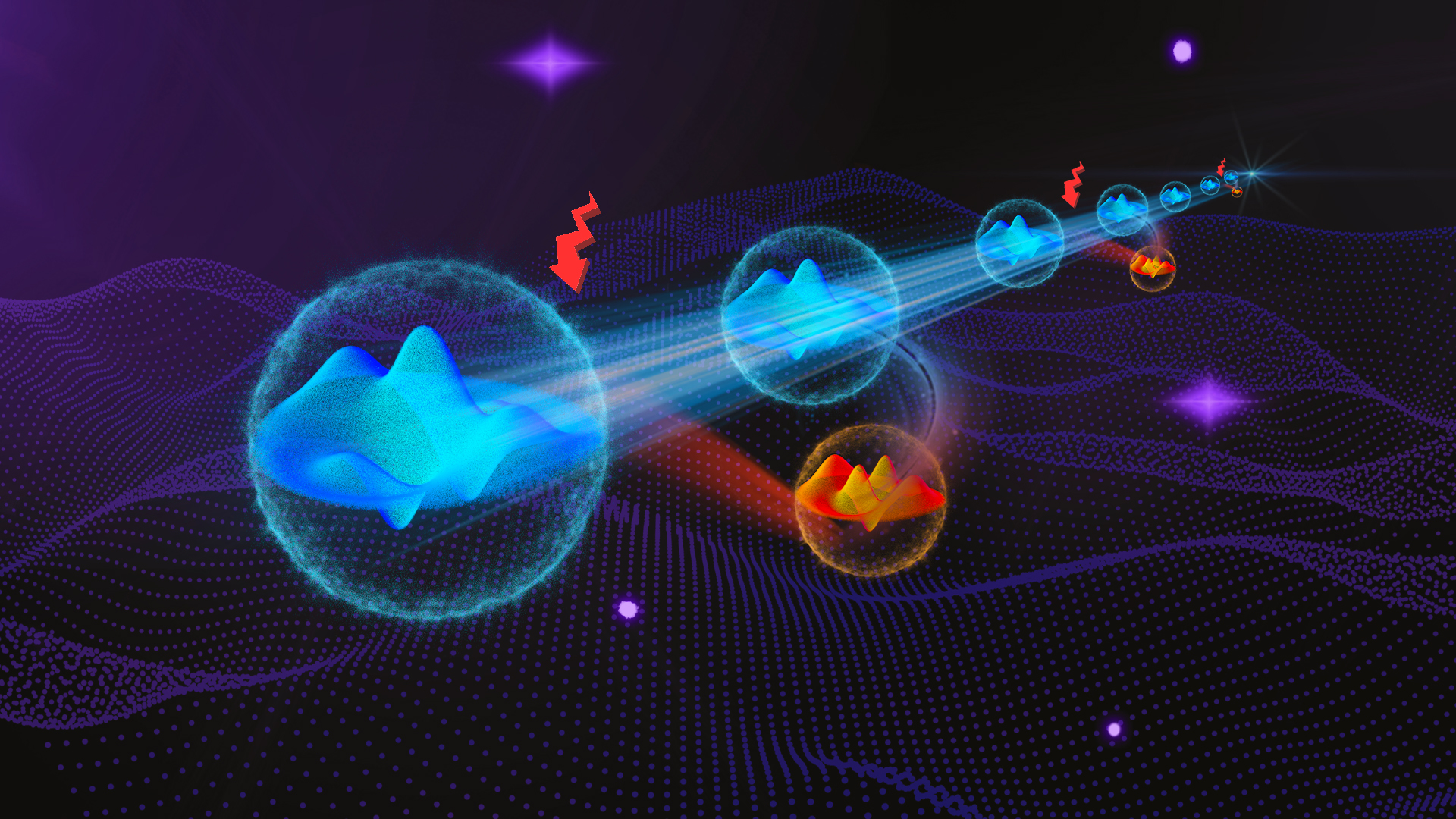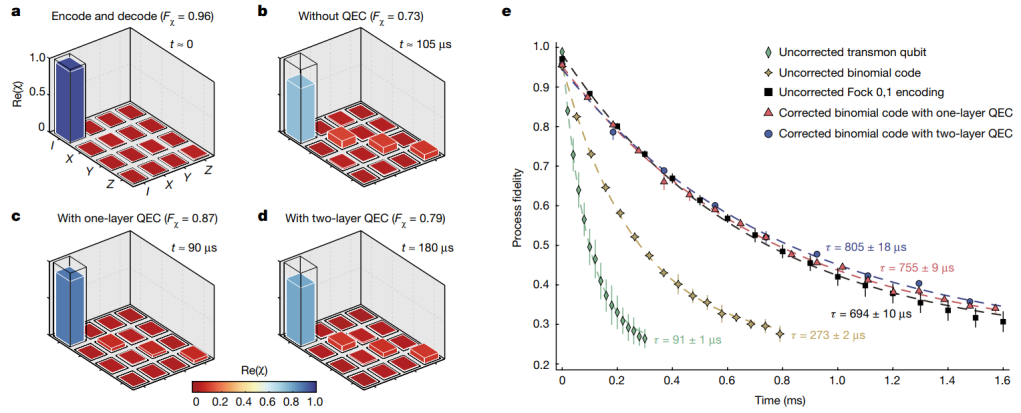Although quantum information processing based on superconducting quantum circuit systems has made great progress in recent years, the error rate of quantum operations is still much higher than that of a classical computer.
Quantum error correction (QEC) is essential for building a practical universal quantum computer because QEC can effectively protect the quantum information against unwanted errors in a noisy environment. Conventional QEC schemes use multiple physical qubits to encode a logical qubit, which not only requires a tremendous amount of hardware resources, but also adds the number of error channels with increasing the number of physical qubits, resulting in an awkward situation of “the more correct, the more errors”.
Although several proof-of-principle QEC experiments have already been demonstrated recently, the problem of “the more correct, the more errors” still cannot be solved to achieve a positive QEC gain to reach the break-even point, which is defined as the lifetime of the best available physical component in this system. This is one of the key bottlenecks for limiting the practical and scalable application of the QEC technology.

Under the leadership of Chair Professor Dapeng Yu from the Shenzhen Institute for Quantum Science and Engineering (SIQSE) of the Southern University of Science and Technology (SUSTech), Assistant Researcher Yuan Xu’s team, together with Professor Shi-Biao Zheng from Fuzhou University and Professor Luyan Sun from Tsinghua University, have recently made an experimental breakthrough in the field of quantum error correction based on superconducting quantum circuit.
They extended the storage time of quantum information beyond the break-even point for the first time through repetitive real-time quantum error correction (QEC), demonstrating the QEC advantage. This work is a big milestone, representing a key step towards practical and scalable universal quantum computation.
Their research findings, entitled “Beating the break-even point with a discrete-variable-encoded logical qubit,” have been published in Nature.

Figure 1. Schematic diagram of the QEC procedure
The research team used the infinite-dimensional Hilbert space in a microwave harmonic oscillator to realize redundant encoding and quantum error correction. In superconducting quantum circuit systems, bosonic QEC code has several advantages, such as simple types of error, convenient error detection, good coherence performance, hardware-efficient devices, and easily achievable feedback control technique.
In this study, they developed a quantum system with high coherence performance, implementing an error syndrome detection method with low error rates, and improved the QEC procedure. As a result, they realized quantum error correction of a logical qubit encoded with discrete photon number states in a single bosonic mode. Through repetitive real-time QEC operations, the storage lifetime of the quantum information has been extended beyond the break-even point.
This is the first time to extend the storage lifetime of the quantum information beyond the break-even point through active repetitive error detection and correction operations, which is a significant milestone for fault-tolerant quantum computation.

Figure 2. Experimental characterization results of the QEC operations
Zhongchu Ni, a doctoral student from SUSTech, is the first author of this paper. Asst. Researcher Yuan Xu is the leading corresponding author, Profs. Luyan Sun and Shi-Biao Zheng are the co-corresponding authors, and Prof. Dapeng Yu is the last corresponding author.
Other collaborators include Song Liu, Fei Yan, and Xiaowei Deng from SIQSE, Chang-Ling Zou from the University of Science and Technology of China (USTC), Haifeng Yu from the Beijing Academy of Quantum Information Sciences (BAQIS), and Zhen-Biao Yang from Fuzhou University. The SIQSE of SUSTech is the first affiliation of this paper.
This research work was supported by the National Natural Science Foundation of China (NSFC), Department of Science and Technology of Guangdong Province, Science, Technology and Innovation Commission of Shenzhen Municipality, and SUSTech.
Paper link: https://www.nature.com/articles/s41586-023-05784-4
To read all stories about SUSTech science, subscribe to the monthly SUSTech Newsletter.
Proofread ByAdrian Cremin, Yingying XIA
Photo By